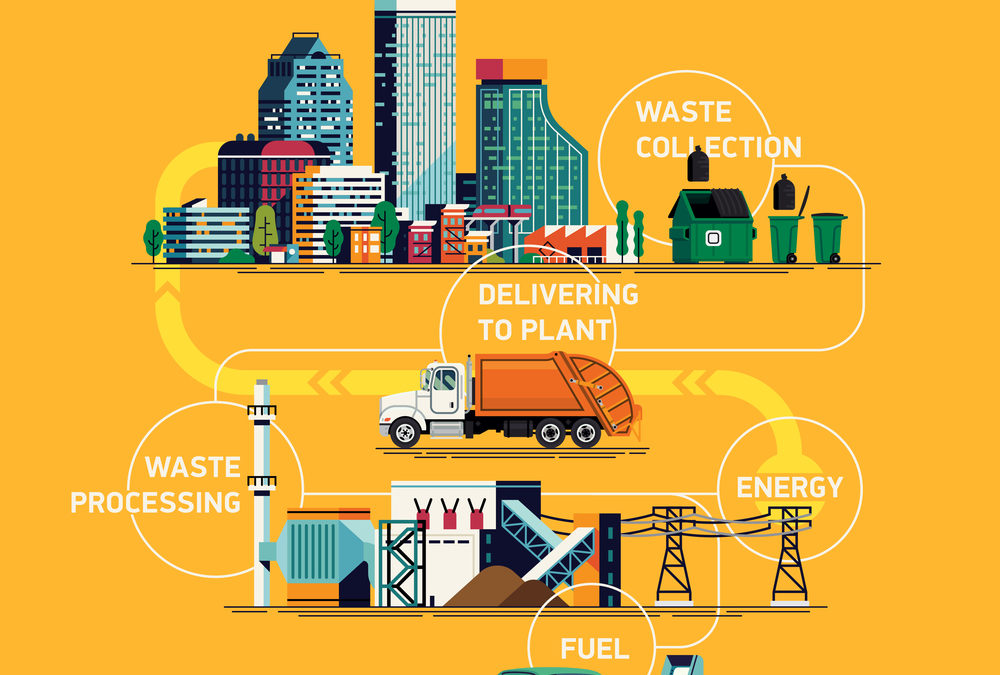Hazardous waste management has come a long way in recent years, thanks to continuous advancements in technology, regulations, and sustainability practices. These innovations are transforming the way we handle and mitigate the environmental and health risks associated with hazardous waste. In this article, we will explore some of the most noteworthy innovations in hazardous waste management and their potential to create a safer and more sustainable future.

Advanced Waste Sorting and Characterization
Innovative sorting technologies, such as artificial intelligence (AI) and robotics, are revolutionizing the way we identify and categorize hazardous waste. These technologies can quickly and accurately classify materials, making the waste management process more efficient and reducing the risk of misclassification.
Waste-to-Energy Conversion
Waste-to-energy (WTE) technologies are gaining popularity as a sustainable solution for managing hazardous waste. These technologies convert hazardous waste into energy sources, such as electricity or heat, through processes like incineration and gasification. This not only reduces the volume of waste but also harnesses its energy potential.
Chemical Recycling
Chemical recycling, also known as feedstock recycling, is an innovative approach that transforms certain hazardous waste materials back into valuable raw materials. This process offers a circular economy solution, reducing the need for virgin resources and minimizing environmental impact.
Bioremediation and Phytoremediation
Bioremediation involves using microorganisms to break down hazardous waste into less harmful substances. Phytoremediation uses plants to absorb, accumulate, or degrade hazardous materials from soil and water. These biological methods offer environmentally friendly alternatives for cleaning up contaminated sites.
Remote Monitoring and Sensors
IoT (Internet of Things) sensors and remote monitoring systems are being used to track hazardous waste containers and monitor environmental conditions in real-time. This technology provides immediate alerts in case of leaks, spills, or temperature variations, enabling rapid response and minimizing risks.
Blockchain for Traceability
Blockchain technology is being explored to enhance traceability and transparency in hazardous waste management. It can create an immutable record of waste movement and transactions, ensuring compliance with regulations and reducing the risk of illegal dumping.
3D Printing for Waste Reduction
3D printing is being used to create components and products from recycled hazardous waste materials. This not only reduces waste but also promotes resource efficiency and sustainable manufacturing practices.
Green Chemistry Solutions
Green chemistry principles are being applied to develop less hazardous materials and processes in various industries. This innovation aims to minimize the generation of hazardous waste from the outset, reducing the need for extensive waste management.
Data Analytics for Predictive Maintenance
Data analytics and predictive maintenance tools are helping organizations anticipate equipment failures and optimize maintenance schedules in hazardous waste facilities. This reduces downtime, minimizes risks, and improves overall efficiency.
Education and Training through Virtual Reality
Virtual reality (VR) and augmented reality (AR) technologies are being used to provide realistic training experiences for hazardous waste management personnel. These immersive tools enhance safety awareness and preparedness.
Conclusion
Innovations in hazardous waste management are shaping a future where environmental risks are minimized, resources are used more efficiently, and sustainable practices are embraced. These advancements not only improve safety and compliance but also contribute to a healthier planet for current and future generations. As technology and sustainability efforts continue to evolve, we can expect even more groundbreaking innovations that will further enhance the way we manage hazardous waste.
Frequently Asked Questions
How are advanced sorting technologies like AI and robotics transforming hazardous waste management?
Advanced sorting technologies, including AI and robotics, enhance the identification and categorization of hazardous waste materials, improving efficiency and reducing the risk of misclassification.
What is waste-to-energy conversion, and how does it benefit hazardous waste management?
Waste-to-energy (WTE) technologies convert hazardous waste into energy sources like electricity or heat, reducing waste volume and harnessing its energy potential, making it a sustainable solution.
What is chemical recycling in the context of hazardous waste management?
Chemical recycling, or feedstock recycling, transforms certain hazardous waste materials back into valuable raw materials, offering a circular economy solution to minimize environmental impact.
How do bioremediation and phytoremediation contribute to hazardous waste management?
Bioremediation uses microorganisms to break down hazardous waste, while phytoremediation uses plants to absorb or degrade contaminants, providing environmentally friendly methods for cleaning up contaminated sites.
How are IoT sensors and remote monitoring systems utilized in hazardous waste management?
IoT sensors and remote monitoring systems track hazardous waste containers and environmental conditions in real-time, providing immediate alerts in case of issues like leaks or spills.








Gestión de Residuos Industriales Peligrosos: Técnicas Modernas de Tratamiento y Eliminación – Ing. Pierre Vargas
[…] management technology? [20]. Incineration In Hazardous Waste Management – US EPA[21]. Innovations in Hazardous Waste Management: Paving the Way for a Safer Future[22]. Community engagement in the waste management and recycling: best practices and success […]